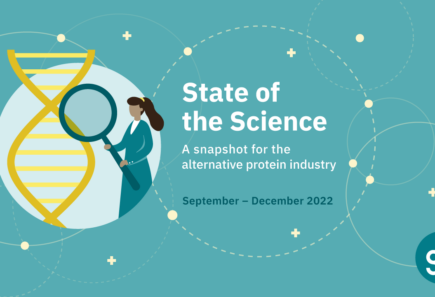
Deep dive: Cultivated meat end products
Cultivated meat end products will have a lot in common with conventional meat. They also present opportunities for innovation and open-access research.

Cultivated meat end products will have a lot in common with conventional meat. They also present opportunities for innovation and open-access research.

In 2022, GFI expanded our global student movement to 36 total universities and collaborated with the government of Singapore to serve cultivated meat at COP27.

GFI's Audrey Gyr talks about the potential opportunity of cultivated fat to play a role in developing plant-based meat products.
This symposium aims to highlight solution- and implementation-oriented research and to promote engagement with some of the greatest threats and obstacles facing public health and research today. GFI Founder and President, Bruce Friedrich, will deliver a keynote address on March 9th.

Join Dr. Filiz Koksel to learn about her GFI-funded research that uses real-time ultrasonic information on extruded plant-based meats to improve their textural and nutritional properties.
GFI Founder and President, Bruce Friedrich, speaks at Harvard University about the newest science and technology behind diets that are good for our personal health and better for the environment.
Hear from industry experts about cultivated meat, seafood, and fat in the Johns Hopkins Alt Protein Project's panel, "All Things Cultivated!"

Alt proteins can not only transform our food system, they can also address the gender gap within STEM fields.

2022 ended with a bang for the alt protein sector! Here are three promising themes that rounded out an already historic year.

Applications to join the Alt Protein Project are now live! Attend our information sessions for students interested in bringing the alternative protein movement to their university.